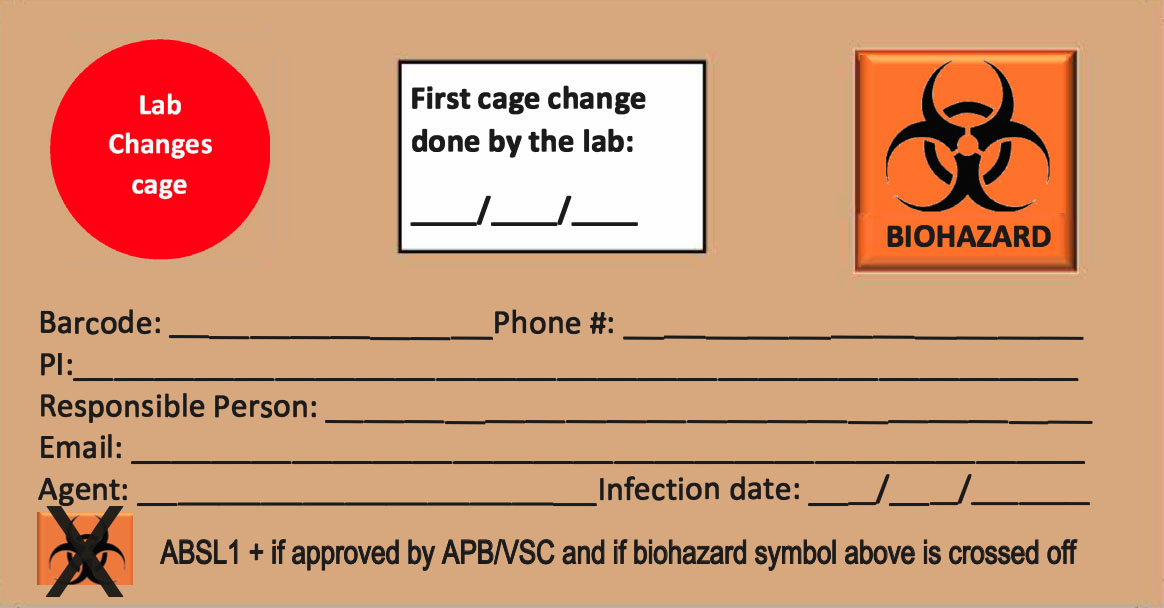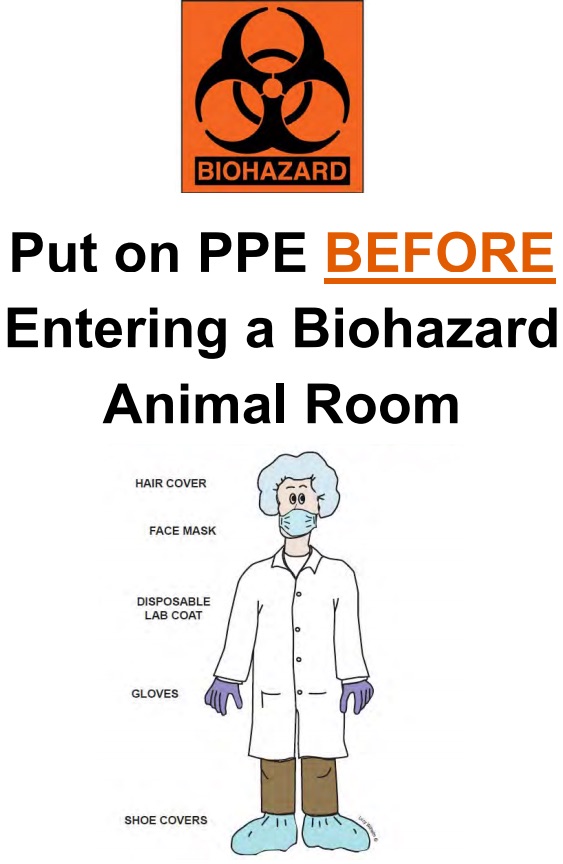Animal housing is done at the appropriate animal biosafety level. The VSC has designated spaces for ABSL1/ABSL1+, ABSL2 and ABSL3 housing, many of which use filtered racks (Figure 1). All animals inoculated with infectious agents or administered rDNA must be housed at the appropriate level. This level is determined by the risk assessment, as well as input from Biosafety, the VSC and APLAC. At Stanford, the majority of animals inoculated with agents that are infectious to humans or to other animals are housed at ABSL2. Animals administered viral vectors or rDNA may be housed at ABSL1+ or ABSL2, depending on risk assessment. Factors considered in the risk assessment of viral vector work include the type of rDNA or viral vector, if human cells are present, and the length of time since cells were transduced, as well as the transgene/ insert or envelope present. See Table 1 for specific scenarios involve viral vectors and when housing at ABSL1+ or ABSL2 is allowed. All other animals inoculated with viral vectors or infectious agents must remain housed at ABSL2 (or appropriate level) for the duration of their life, unless approved by the APB.

Table 1. Animal housing requirements for Biosafety and Biosecurity
ABSL Work Practices
ABSL work practices build on BSL work practices (see Table 2 in Chapter 3) but incorporate specific animal-related items. All BSL1, 2 or 3 work practices, including but not limited to those addressing decontamination, BSC use, physical containment, handwashing and pipetting, must be followed for the equivalent ABSL. Table 2 summarizes additional animal biosafety work practices, based on the BMBL.
Designated ABSL2 housing and procedure spaces exist within the VSC facilities. VSC-designated PPE must be worn in all ABSL2 facilities. PPE is provided by the VSC for animal housing locations within the VSC (Figure 3), and signs indicating the required PPE are posted in all ABSL2 spaces. If different PPE practices are employed from those posted, the PPE must be discussed and outlined in the associated APB protocol and with the VSC. For animal work that is done in laboratory spaces, BSL2 and ABSL2 work practices must be followed, and the PPE designated in the associated APB must be worn. If animal work is done outside the VSC, transport of ABSL2 animals must be done using appropriate containment measures, and carcasses and caging/bedding must be returned to the VSC for appropriate disposal. Training sessions (see below) regarding working with biohazards in animals address these PPE and transportation requirements.
Cages containing animals inoculated with infectious agents or administered viral vectors or rDNA must be labeled appropriately and labels remain with the animals for the duration of their life (Figure 2). Labeling cards are designed and approved by the VSC, and should indicate at a minimum the agent, date of inoculation, and date of cage change by lab personnel (thereby allowing VSC staff to resume cage changes if appropriate). The VSC labeling scheme allows for cages to be marked as no longer biohazardous and moved to ABSL1+, but the labeling remains to indicate that animals were once treated with viral vectors or rDNA. This labeling serves to inform any personnel working with the animals, including VSC caretakers, of the appropriate pathway for carcass disposal.


